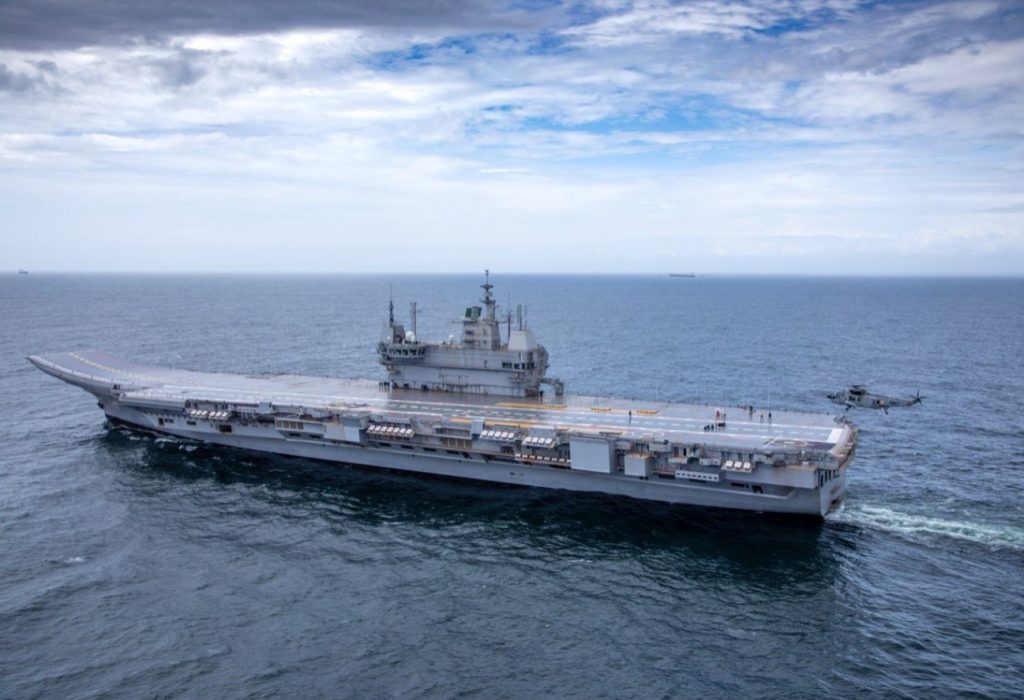The first locally-developed, and built, aircraft carrier for the Indian Navy got underway on August 4 for its sea trials, 12 years after starting construction.
Also referred to as Indigenous Aircraft Carrier (IAC), Vikrant was designed by the Indian Navy’s Directorate of Naval Design(DND) and built at Cochin Shipyard Limited(CSL), a public sector shipyard under the ministry of shipping (MoS).
While its commissioning is already seven years behind the original schedule, the carrier remains a cornerstone of the “Make in India” drive, which aims to boost the capacities and capabilities of the domestic defense industry. According to the Indian defense ministry, Vikrant features more than 76 percent of indigenous content.
With a length of 262 meters, and a width of 62 meters, the ship is designed for a maximum speed of 28 knots thanks to gas turbine propulsion. The crew of around 1700 people will have specialized cabins to accommodate women officers and will benefit from a high degree of automation for machinery operation, ship navigation and survivability. The ship has an endurance of about 7,500 nautical miles.
While it was designed locally by Cochin, Vikrant shares some of the design features with the current Indian Navy flagship and former Soviet carrier INS Vikramaditya, with the most obvious being the ski jump ramp that facilitates the launch of fixed-wing aircraft. India bought Vikramaditya from Russia in 2004 and commissioned it in 2013.

“With the delivery of IAC, India would join a select group of nations with the capability to indigenously design and build an Aircraft Carrier, which will be a real testimony to the ‘Make in India’ thrust of the Indian government,” the defense ministry said.
“Indian Navy’s ship building program is rightly poised to provide requisite ‘economic stimulus’, with 44 ships & submarines on order being built indigenously.”



























